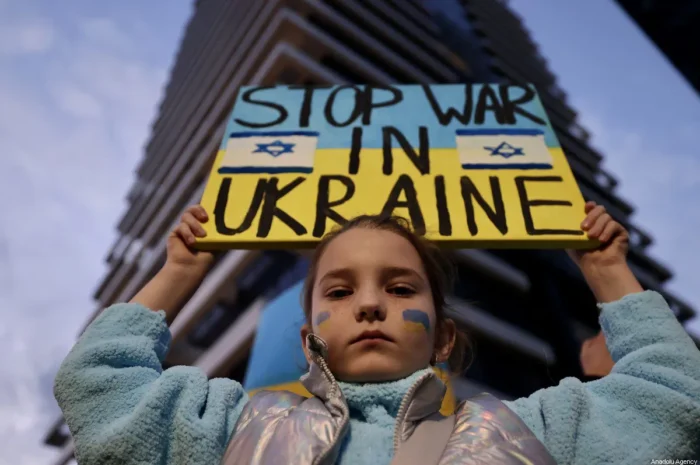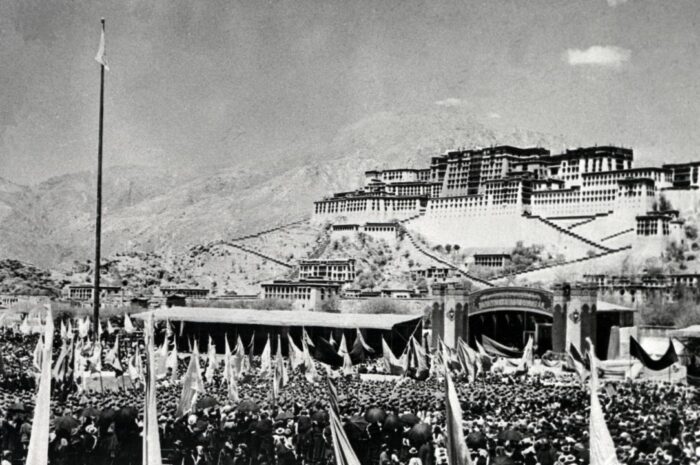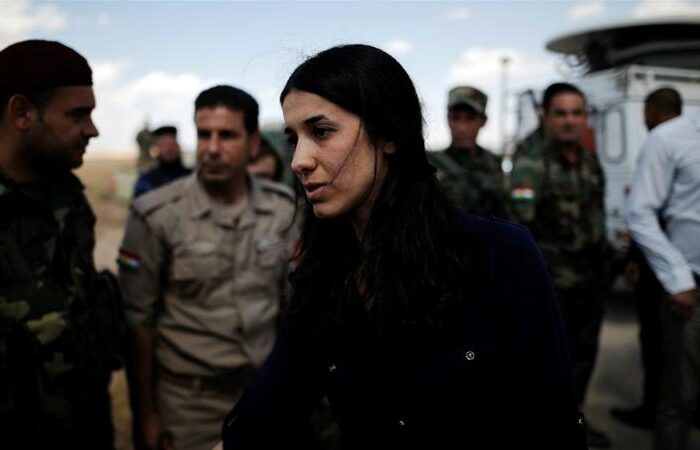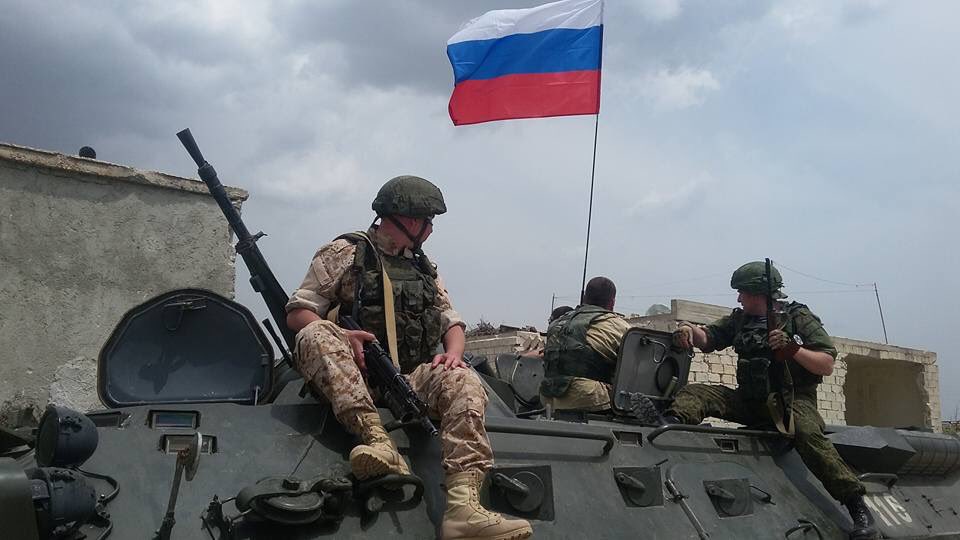
The following article was originally published in The Region.
As Turkey resumes its air and land invasion of Afrin in Syria, Anthony Avice Du Buisson provides you with his take on how to understand the geopolitics of the crisis.
What is the Afrin Crisis?
Turkey has recently launched a new military operation into Syria’s Afrin canton called, ‘Olive Branch’. This new operation aims at expelling what Ankara claims to be, ‘PKK terrorist elements’ from its borders and ‘liberating’ locals from ‘PKK/PYD rule’. The operation comes at a time when US – Turkish relations are at an all-time low and when Russia has green-lighted a Syrian government offensive in Idlib.
The Turkish airforce (TyAF) conducted a number of airstrikes around the canton, including Afrin city itself that injured innocent civilians and damaged ‘People’s Protection Units’ (YPG) outposts. Airstrikes were followed by advancements north of Idlib by the Turkish Army (TSK) and Turkish backed opposition forces of the Free Syrian Army (TFSA) into southern Afrin. Clashes erupted throughout the canton as YPG sought to repel a number of TFSA from Euphrates Shield (ES) territory and southern Afrin.
Afrin canton is located in Syria’s Northwest, just above Syrian opposition held Idlib. It has been under the YPG, a Kurdish – dominated militia and military wing of the ‘Democratic Union Party’ (PYD), ever since locals rose up against the Syrian government at the start of the Syrian conflict. Relatively untouched by the war, Afrin has endured minor clashes with and shellings by Islamists over the years. It currently has a truce with Damascus and has had increasingly warm ties with Russian Military police and Special Forces as well.
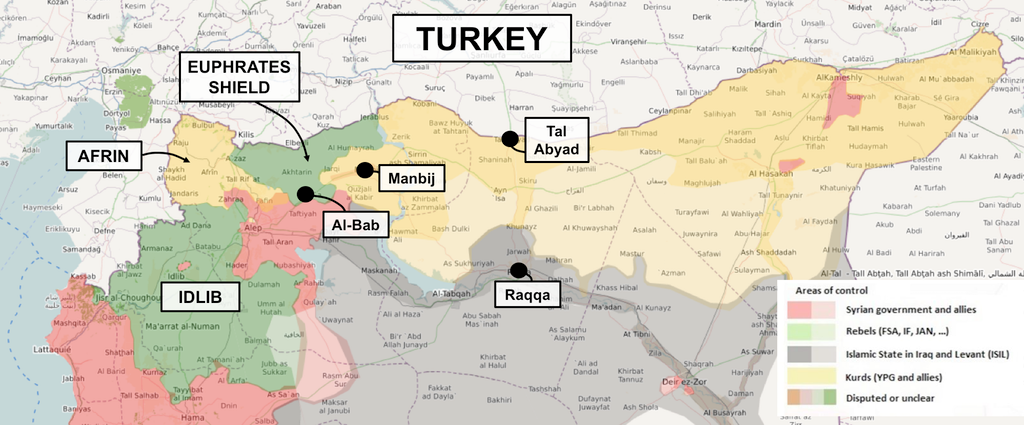
Source: socialistincanada.
Why does Turkey feel threatened by the YPG/PYD?
The YPG/PYD in Syria has long been viewed by Ankara as a Syrian branch of the Turkish outlawed organisation, ‘Kurdistan Workers’ Party’ (PKK) – who has been fighting the Turkish state within its borders since 1984. Turkey’s obsession with preventing what it perceives as a ‘terror corridor’ from forming along its border has put it at odds with Washington.
The Pentagon has been backing the YPG in its fight against the Islamic State (ISIS) in Syria since 2014. In late 2015, the Pentagon helped form the ‘Syrian Democratic Forces’ (SDF), a multi-ethnic coalition of Kurdish, Arab and Assyrian fighters – made up of various FSA groups, Arab tribes and YPG. SDF has been a major local ally in the fight against ISIS, which has placed strain on US-Turkish relations for much time.
Ever since the siege of Kobane, Turkey has taken a hostile stance towards the YPG and has expressed repeatedly its desire for the US to sever ties with YPG. And at every moment Turkey has shown disapproval, Washington has paid lip service to its relationship with Ankara and has tried to keep the peace. However, Ankara has grown tired of this and increased its rhetoric against US, as well as the SDF. Things, as they currently stand, don’t look good for US-Turkey relations.
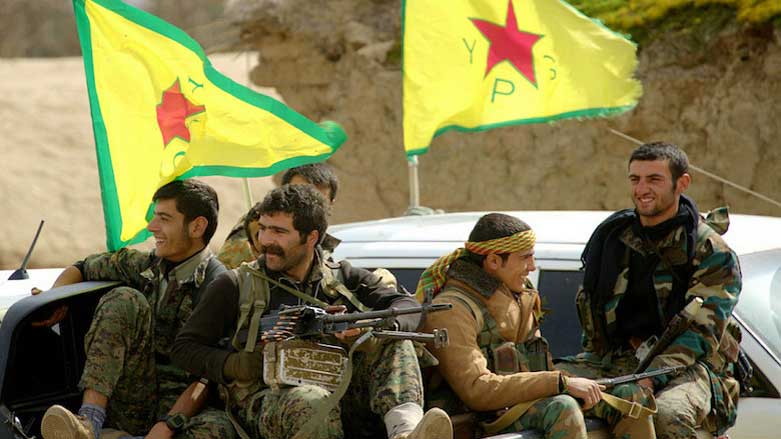
Source: Kurdistan24.
Why now?
Earlier this week, Turkish president Erdogan announced plans for a military operation into Afrin and Manbij, which lies near Aleppo and west of the Euphrates River. Erdogan warned that should the YPG not withdraw and surrender to Turkish forces, then it would be annihilated. These strong statements came in response to the news of a ‘border force’ that was to be established out of the SDF. This ‘border force’ (in reality nothing new and just a reorganisation of local forces to keep ISIS from regrouping) was accused by Turkey of being a ‘terror army’ that was being supported by US. Erdogan promised on Turkish state media to oppose this army and those who supported it.
The launching of Operation, ‘Olive Branch’ (quite the misnomer given the artillery and jets) coincides with another operation that is being conducted in Idlib by the Syrian Government and its allies.
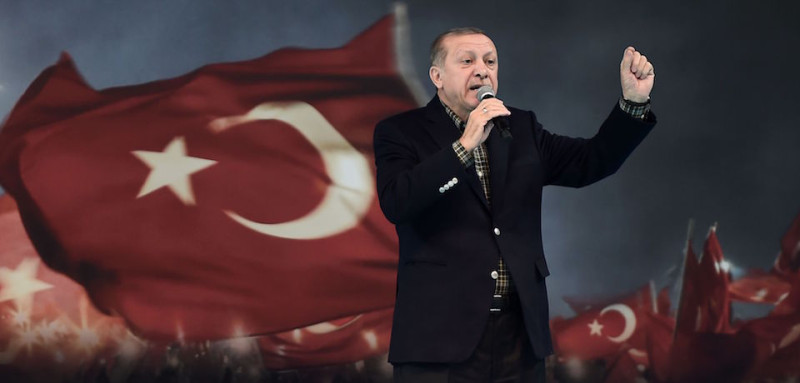
Source: OZAN KOSE/AFP/Getty Images.
What does Idlib have to do with the Afrin Crisis? How does Moscow play into the Turkish invasion of Afrin?
Since the Astana talks in September between Iran, Russia and Turkey (interlocutors in the conflict), it was decided that Idlib would be divided into de-escalation zones. The international community has been alarmed both by rebel infighting in the province and the domination of Jihadists in Idlib.
When arrangements were made between Turkey and Hay’at Tahrir Al – Sham (HTS), an Al – Qaeda aligned group dominating Idlib, in late 2017 to allow Turkey access to Idlib’ s north, Russia expected Turkey to do its part in ‘softening up’ the opposition. However, when Russia became displeased at Turkey’s ‘cuddling’ up to HTS, Russia green lighted Syrian Government forces to begin pushing north of Hama and into Idlib in January. In response, Erdogan increased further his rhetoric against Assad’s Government.
Angered at the behaviour of Russia and seeking to increase the support of his nationalist base, Erdogan promised to conduct an attack on Afrin, which has Russian personnel stationed there. Threatening to engage with anyone who stands in Turkey’s way, Erdogan has engaged in political theatre while Russia watched and laughed. That was until yesterday, when Turkey called Russia’s bluff and began bombing Afrin.
After Russian military officials met with Turkish military officials to discuss Afrin, Russian foreign minister Lavrov assured that Russian forces would not be withdrawing in Afrin. However, this clearly would not be the case, as soon after airstrikes started, Russian forces withdrew to a safe distance away from the attacks. Indicating that an arrangement had been made between the two nations, where southern Idlib would be taken in exchange for parts of Afrin, Russia threw its Kurdish allies under the bus.
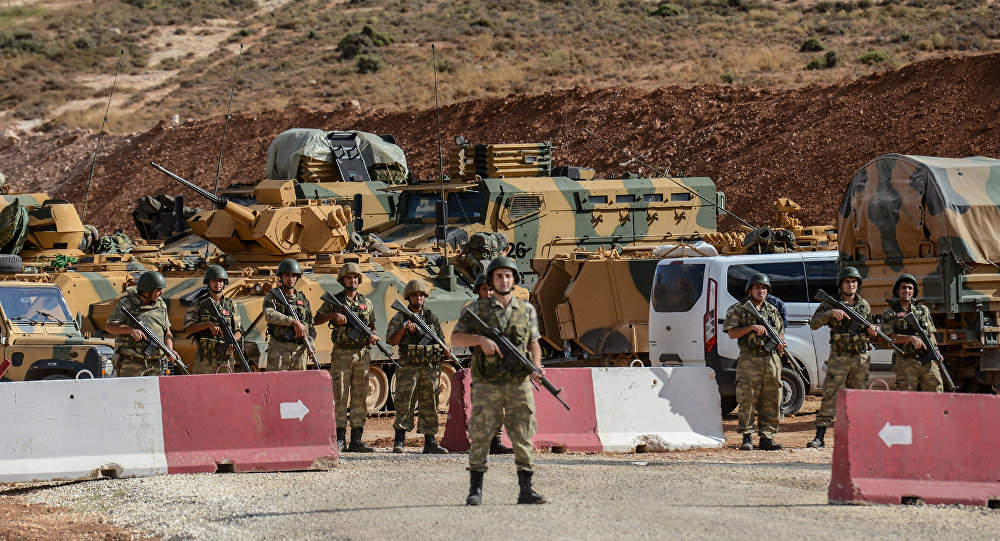
Source: Syria360.
What is so significant about Afrin, and what is next?
One of the few areas left untouched by war now has Turkish planes flying overhead. Armed with equipment and Aircraft supplied by UK, as well as other NATO allies, Turkey is now using what it has to target refugee camps and civilian areas – all under the guise of fighting ‘terrorism’. However, for the thousands of people living in the canton, the differentiation between Jihadists and the Turkish state is practically non -existent. For many in Afrin and Rojava, Turkey is a ‘fascist’ and ‘anti – Kurdish’ state, ‘hell-bent on annihilating Kurds’.
As the shelling and airstrikes continue across the canton, Islamists of TFSA slowly begin their push into the region. Chanting slogans that are reminiscent of a past siege, where ISIS attacked another Kurdish canton at Kobane. For the YPG and people of Afrin, an invasion by Turkey has been on the horizon for some time. Now the invasion has commenced.
Should Turkey advance far enough into the canton, it will be no surprise to see an operation being conducted into Euphrates Shield territory by YPG. Moreover, should Erdogan be so bold as to push into Manbij where US coalition area of operations is, it is feared that relations between the US and Turkey will be at a crossroads. However, it has not come to that yet.
For now, Afrin is under siege and civilians seek protection. The international community must stand in solidarity with the people of Afrin and humanitarian aid needs to be delivered, as well as a strong defence of the region from Turkish aggression needs to be made. Until this happens, things will get worse in Syria. People in Afrin and throughout Rojava now prepare for what is to come. As for me, I will be standing in solidarity with the people of Afrin, as should the world.
Written by Anthony Avice Du Buisson (21/01/2018).

